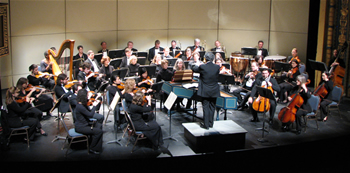Comes now the young Brazilian guitarist by way of Spain to make his mark in America. Two years ago the name reached our shores with a glossy and expensive media kit that included a recording of Bach’s first three Suites for unaccompanied cello – at once, a risky introduction due to hypercritical attention it draws from guitarists and Bach scholars. A debut guitar recording is usually safe with Spanish music.
A student of Isaías Savio at the Conservatorio Dramático e Musical de Sao Paulo in his native Brazil, Marcos Díaz moved to Spain as a young man, and there completed his formal music education. He studied at the Conservatorio Profesional de Música de Ourense with Tomás Camacho and later at the Real Conservatorio Superior de Música de Madrid, where he studied under José Luis Rodrigo and won the “I Premio Extraordinario Fin de Carrera de Guitarra” in 1984. With these credentials, and a very well funded marketing campaign he has received wide acclaim in Europe, and has now begun to test the waters in America with a series of performances.
His April 14 program at Saluda’s Presbyterian Church was formidable, bristled with technical challenges, and impressed with clear technique and mature artistry. He opened with four pieces by John Dowland (1563-1626) – a prelude, “Sir John Smith, his Almain,” and two fantasies. With a capo fitted at the second fret to replicate 17th-century pitch standards, Díaz spun these devilish contrapuntal webs with confidence, brilliant speed when needed, and unfailing intonation.
Next came Joaquín Rodrigo’s “Invocación y Danse,” the award winning work dedicated to Falla with hints of impressionism. Díaz was completely comfortable with all the techniques required from this demanding work, and in shaping the tremolo and “polo dance” sections offered clear artistic insight. This was followed by the single-movement “Grand Solo,” Op. 14, of Fernando Sor. Here the varied voices found both clarity and individual identity, perhaps because Díaz performed a hybrid of the three published editions known to exist, while accommodating stylistic conventions. It had a fresh and vibrant feel yet was performed with “classic” restraint.
Performing without an intermission Díaz proceeded directly to his own transcription of the First Suite for unaccompanied cello, S.1007, by J. S. Bach. His setting is similar to others that have been around for at least 45 years. The seven-movement work was not heavily ornamented, nor did Díaz vary the repeats of each binary movement. He did display a cool and intelligent comprehension of baroque harmonic phrasing, and his execution was nearly perfect, although during the first pass at the Courant B section, he must have become momentarily distracted because he lost his way, trying several times to reconnect with the melodic path until finally restarting the section. He then played through to the end and the repeat without error. You know, he probably thought about whether he turned off the stove back in Spain!
The program concluded with two large works by 19th-century South American guitarist/composer Agustin Barrios Mangoré. First he played the three-movement, 1938 version of La Catedral, concluding with the great tremolo work “Una Limosna por Amor el Dios” (“An Alm for the Love of God”) written in 1944. Despite the late dates of these compositions, Barrios really belongs to the great romantic era of the century before. Both his harmonic language and forms suggest a great longing, emotional struggle, and often exciting caprice.
The small audience stood and cheered the guitarist for his brilliant performance asking him to return for two encores. One of those, “Recuerdos de la Alhambra” by Francisco Tarrega, mirrored the Barrios tremolo work in both beauty and fluid execution.
While Díaz’ playing is self assured, accurate, and filled with expressive dynamic changes, it is also true that his vision often borders at the edge of aural museum exhibit. He is not very adventurous and prefers the safe, measured, and thoughtful approach, always in tune, and just the right tempos.
To date Díaz’ has released three CDs on the Ópera tres label. One includes the entire program of this concert. The other two contain his transcriptions of the six Suites for unaccompanied cello by J. S. Bach. In these recordings, his technical approach makes for an impeccable guitar experience, exactly like this live recital in Saluda.
Mark down the name. We’ll hear more from this guy.











